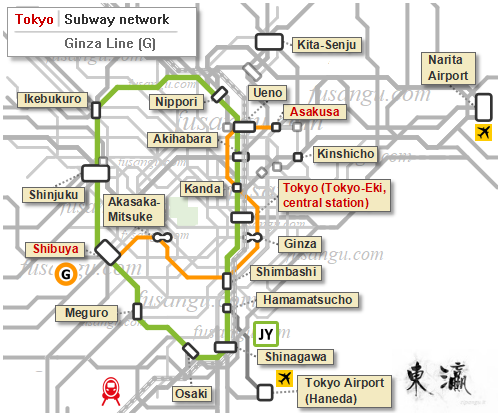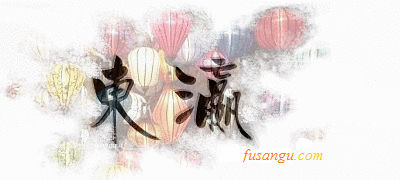
The Ginza-sen is a fundamental transportation tool for anyone who wishes to visit Tokyo, both for short and long stays.
The subway line connects some of the city’s most popular tourist areas and serves many important stations and transportation hubs.
In this page we describe a one-day tour along the Ginza Line. The article includes a programme suitable for short stays.
The Ginza Line is Tokyo’s oldest subway line. It is managed by Tokyo Metoro, the main operator. The line runs through the centre between two areas of major important such as Asakusa and Shibuya.
The Ginza Line connects the following areas:
-
Asakusa, historical quarter; Senso-Ji, a famous Buddhist temple, is located near the Asakusa Station;
-
Ueno, in the vicinity of Asakusa and Akihabara, around the station are important museums and one of Tokyo’s largest parks;
-
Ginza, noted as the cosmopolitan core of modern Tokyo and luxury hub. Aside from huge malls and glittering boutiques, here you can visit a few traditional and historical shops as well as temples and shrines;
-
Minato, a large upscale residential district, usually neglected by first-time visitors. Here are a few parks and green areas, some historical sites, museums, skyscraper clusters and few important temples and shrines;
-
Shibuya, a major entertainment area, synonym for fashion, latest trends, consumerism. Not too far from the main train stations are a few museums and places of cultural interest.
If you want to visit all these places we suggest you count on at least two full days, especially if you want to include a visit to Minato.
Below is the programme for a one-day tour through Asakusa, Ueno and Shibuya. All transfer can take place by solely using the Ginza Line.
Recommended itinerary along the Ginza Line
You can start your journey at Asakusa Station, the main transportation hub in Asakusa neighbourhood and a common access point for those who reach Tokyo from Narita Airport:
-
9:00 - 11:00: visit to Senso-Ji, historical Buddhist temples. Once you have gone through the Kaminari-Mon, an elegant gate, you enter Nakamise-dori, the large street leading to the main hall of Senso-Ji. Here are many tourist shops where you can find good-quality presents. Nearby is also Asakusa-Jinja, a Shinto shrine that miraculously survived the tragic 1945 fire bombings;
-
11:00 - 11:15: transfer along the Ginza Line between Asakusa Station and Ueno Station;
-
11:15 - 15:00: visit to Ueno. In around three hours and a half you pay a brief visit to the main museum of the area, the National Museum of Tokyo, and have a walk in Ueno Park;
-
15:00 - 15:30: transfer along the Ginza Line between Ueno Station and Shibuya Station;
-
15:30 - 18:00: visit to Shibuya. Just next to Hachiko Exit is the statue that commemorates Hachiko, the dog that in Japan became a symbol of loyalty and devotion. This is next to Shibuya Crossing, one of Tokyo’s most magnetic sightseeing spots, become a landmark that exemplifies the frenetic nature of the modern metropolis. All around are some of the city’s finest shopping malls. If you are more into cultural paths, do not miss out on a visit to the flagship store of Tsutaya, a renowned chain of bookshops. You can then have dinner in one of Shibuya’s izakaya, simple and often unassuming eateries. Shibuya is also a major entertainment hub that can cater to travellers from all walks of life.
Variants:
-
In spring: if you happen to visit Tokyo around the end of March you may want to add a short walk through Sumida Park. Located near the eastern shore of Sumida River, the park is noted for the copious presence of cherry trees, many of which belong to rare particularly ornamental varieties;
-
In autumn: there are no major autumn colour sightseeing spots near stations along the Ginza Line. Without getting to far, you may add a visit to the beautiful Koishikawa Koraku-En or Rikugi-En; both gardens are located in Bunkyo, a district located west of Ueno.
Related articles:
Main article: Tokyo 3-day itinerary
Itineraries along the subway lines (Asakusa, Hibiya, Ginza, Marunouchi, Tozai, Mita, Namboku, Yurakucho, Chiyoda, Shinjuku, Hanzomon, Oedo, Fukutoshin)

